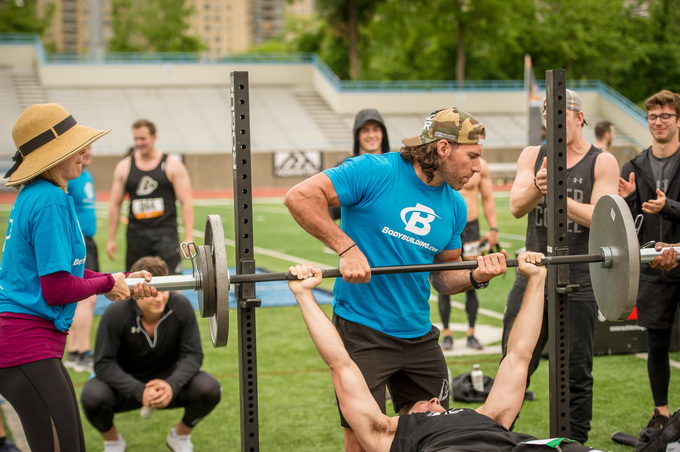Train With Purpose: Total-Body Strength
September 7, 2018

Train With Purpose is a series brought to you in collaboration with Bodybuilding.com.
By: Charles Staley
Bodybuilding.com contributor Charles Staley is a coach, teacher, and three-time world champion in raw powerlifting.
Lifters are notorious for getting lost in the details. They obsess over their grip width on biceps curls, whether they're doing "enough" for their quad sweep, and how many abs they can see at any given time of day.
Meanwhile, they ignore the real problems that are keeping them from adding size and strength. Total-Body Strong is the solution to that problem—and many others. It's how I train, after well over 30 years in the iron game. It's how my clients train - from elite male powerlifters to 50-year-old women who are nailing their first pull-ups.
In my own case, Total-Body Strong-style training led to a recent set of 10 reps with 405 on the deadlift at age 58, at a lean 193 pounds. If you asked me a few years ago if I saw that coming, I would have definitely said no. But there's a catch...
As the name "Total-Body Strong" implies, this is full-body training. You may have thought you outgrew that a long time ago, but I'm asking you to reconsider it. To be clear, Total-Body Strong isn't the "use every machine in the gym, trying to cram 15 moves into an hour-long workout" kind of full-body training you'll often see. It's just solid lifting, periodized perfectly to help anyone - man or woman, new lifter or advanced iron warrior - add muscle where they need it and strength all over.

Strong From Head To Toe
No matter what your background is coming into this program, the type of full-body training you do in Total-Body Strong should be an interesting challenge. You'll squat every training day. Push every training day. Pull every…you get it.Over the course of the eight-week program, the reps will change, and the movements will change, but the basic template won't. The exercises listed in this workout are ideal, but by no means necessary. If you train somewhere without a hack squat machine, try something like heavy dumbbell goblet squats instead (seriously, these are awesome).
If deficit deadlifts are the sworn enemy of your lower back, do any other deadlift or hinge variation that feels OK. Trap bar deadlifts are a great option for the high reps demanded here, especially if you make sure to perform them more like a Romanian deadlift (i.e., strict hip hinge, feeling a stretch in the hamstrings) than a squat. Point being, you have options—both with exercises, and with the workout itself. Feel free to break up movements into slow circuits or pairings based on equipment, or what feels right. But keep the pace slow and under control. This ain't no MetCon!
A Word on RPE: It stands for "rate of perceived exertion," and it simply means how hard, on a scale of 1-10, each set feels. Yes, it's highly personal rather than scientific, but plenty of coaches and athletes swear by it. For sets of 15, think of it like this: Reps 12-15 should be hard, but never in doubt. If you hit what feels like a 7 in, say, 12 reps or 18 reps, no sweat!
Day 1: Full-Body Routine 1
4 sets, 15 reps (RPE 7)


For a D10-specific approach to total-body strength, check out World and Olympic Champion Adam Nelson's Heptember training program here.









